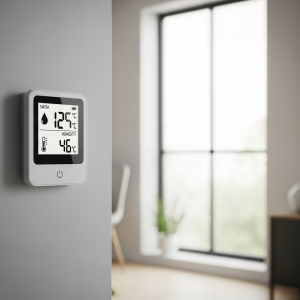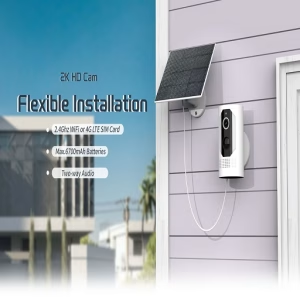Intelligent Security System Design for Crowded Places
Introduction
In today’s world, security is paramount, especially in crowded places like office buildings, halls, theaters, and stadiums. Traditional security measures often fall short in effectively addressing the complex challenges posed by large crowds and potential threats. Intelligent security systems, powered by advanced technologies such as artificial intelligence, machine learning, and IoT, offer a comprehensive solution to enhance security, efficiency, and overall safety.
This article delves into the key components, design considerations, and best practices for implementing intelligent security systems in crowded places.
Core Components of an Intelligent Security System
Video Surveillance:
- High-Definition Cameras: Deploy high-resolution cameras to capture clear and detailed images.
- Pan-Tilt-Zoom (PTZ) Cameras: Provide flexibility to monitor large areas and focus on specific regions.
- Thermal Imaging Cameras: Detect heat signatures, useful for night-time surveillance and detecting concealed objects.
- Analytics-Enabled Cameras: Utilize advanced analytics to detect anomalies, such as abandoned objects, crowd surges, and unauthorized access.
Access Control Systems:
- Biometric Access Control: Employ fingerprint, facial recognition, or iris scanning for secure access.
- Card Access Control: Use RFID cards or mobile credentials to control entry and exit points.
- Interlocking Systems: Coordinate access control with other security systems, such as alarms and CCTV.
Alarm Systems:
- Intrusion Detection Systems (IDS): Detect unauthorized entry or intrusion attempts.
- Fire Alarm Systems: Detect and respond to fire hazards.
- Emergency Alarm Systems: Trigger alarms for specific events, such as panic buttons or medical emergencies.
Video Analytics:
- Object Detection and Tracking: Identify and track objects of interest, such as people, vehicles, and suspicious items.
- Face Recognition: Recognize individuals and identify potential threats.
- Behavior Analysis: Detect unusual behavior, such as loitering or aggressive actions.
- Crowd Density Analysis: Monitor crowd density to prevent overcrowding and potential incidents.
Integration with IoT Devices:
- Smart Sensors: Collect data on temperature, humidity, air quality, and other environmental factors.
- IoT Devices: Integrate with IoT devices like smart locks, smart lighting, and smart thermostats to enhance security and efficiency.
Design Considerations for Crowded Places
Risk Assessment:
- Identify potential threats and vulnerabilities, such as terrorism, crime, and natural disasters.
- Assess the specific needs of the location, considering factors like foot traffic, layout, and security requirements.
Scalability:
- Design the system to accommodate future growth and expansion.
- Choose scalable hardware and software solutions.
Reliability and Redundancy:
- Implement redundant components and backup systems to ensure continuous operation.
- Regular maintenance and testing are essential to maintain system reliability.
User Experience:
- Design a user-friendly interface for security personnel to monitor and manage the system.
- Provide clear and concise alerts and notifications.
Data Privacy and Security:
- Implement robust security measures to protect sensitive data.
- Comply with relevant data privacy regulations.
Integration with Existing Systems:
- Ensure seamless integration with existing security systems, such as access control and fire alarm systems.
Best Practices for Implementing Intelligent Security Systems
- Clear Objectives: Define clear security objectives and goals to guide the system design.
- Comprehensive Site Survey: Conduct a thorough site survey to identify potential vulnerabilities and optimize system placement.
- Quality Hardware and Software: Invest in high-quality components and software to ensure optimal performance.
- Professional Installation and Configuration: Hire experienced professionals to install and configure the system correctly.
- Regular Maintenance and Updates: Keep the system up-to-date with the latest firmware and software patches.
- Employee Training: Train security personnel on how to effectively use and monitor the system.
- Regular Testing and Evaluation: Conduct regular tests to ensure system functionality and identify areas for improvement.
Future Trends in Intelligent Security Systems
- AI and Machine Learning: Advanced AI algorithms will enable more accurate and efficient threat detection.
- Biometric Authentication: Biometric technologies, such as facial recognition and iris scanning, will enhance security and convenience.
- Edge Computing: Processing data at the edge devices will reduce latency and improve real-time response.
- Cybersecurity: Strong cybersecurity measures will be essential to protect against cyberattacks.
- Integration with Smart City Infrastructure: Seamless integration with other smart city systems, such as traffic management and public safety.
By incorporating these elements and following best practices, organizations can implement robust and effective intelligent security systems to safeguard their assets and personnel.




